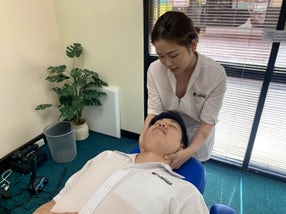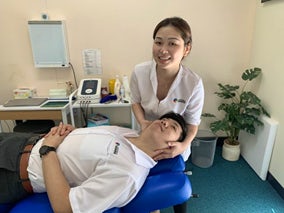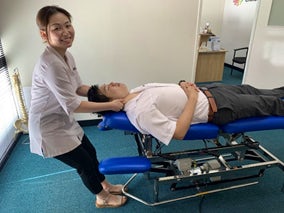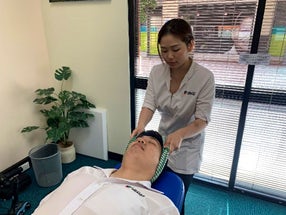Cervical spine Instability is a common missed diagnosis of neck pain
Neck Instability is a condition characterised by too much movement of the neck. Patients with cervical spine instability are able to move their neck beyond the normal range of motion due to bony and ligamentous derangement. Frequently, this causes an inability to maintain normal posture and patterns of movement of the head, particularly under physiological stress. Neck instability is commonly misdiagnosed as nonspecific neck pain, however the correct diagnosis of this condition is crucial as it can often leads to nerve damage or irritation, deformity or incapacitating pain.
What Causes neck Instability?
There are a number of potential causes of cervical spine instability
- Major trauma. A traumatic flexion-extension movement of the neck (commonly referred to as whiplash) can cause ligament damage or fractures with subsequent instability. Examples of these kinds of traumatic injuries include motor vehicle accidents and rugby or football injuries.
- Repetitive trauma. Repetitive flexion and extension can lead to cervical spine instability.
- Inflammatory conditions. Cervical spine instability can often be associated with other conditions including Ankylosing Spondylitis and Rheumatoid Arthritis due to the progressive destruction of cervical structures.
- Congenital conditions affecting soft tissues. Down’s Syndrome, Ehlers-Danlos and Marfan’s are all conditions commonly associated with hypermobility, potentially causing cervical spine instability.
- Recent head, neck or dental surgery may also lead to cervical spine instability.
Do I have neck Instability?
 The following symptoms may be present in patients with cervical spine instability.
The following symptoms may be present in patients with cervical spine instability.
- Intolerance to prolonged static positions
- Easy fatigability of the neck with an inability to hold head up
- Neck pain or fatigue relieved with external support such as holding the head up with your hands
- Feeling of instability or shaking
- Frequent episodes of acute neck pain
- Sharp neck pain, often associated with sudden head or neck movements
- Head feels heavy
- Pain or heaviness feels better when lying down
 You may also notice symptoms associated with your neck pain or discomfort including:
You may also notice symptoms associated with your neck pain or discomfort including:
- Increased muscle guarding or spasms in the neck
- Catching, clicking, clunking or popping sensation heard during movement
- Numbness, tingling or other abnormal sensations in your arms and/or legs
How is neck instability Diagnosed?
Cervical spine instability is often diagnosed through a thorough history and physical examination. Other diagnostic procedures include:
- X-Ray Imaging is the most important
Flexion and extension views are often needed to assess for the presence of cervical spine instability. X-Ray imaging may also reveal other findings which are associated with hypermobility including signs of inflammatory conditions, nerve impingement or fractures if associated with an acute traumatic injury.
- MRI and CT Imaging
These may also be required depending on the chronicity of the patient’s complaint and associated symptoms.
How can Chiropractic Help with Cervical Spine Instability?
Our chiropractors at Lakeside Chiropractic are well equipped to assess and manage patients with suspected cervical spine instability. While severe cases of instability may require assessment and management by an orthopaedic surgeon, management through physical therapy and conservative care for symptomatic relief may be beneficial for patients without neurological involvement.
 Management may include:
Management may include:
- Posture education and spinal mobilisation to improve biomechanical efficiency and reduce loads placed on the spine
- Strengthening exercises to strengthen and stabilise the muscles and joints to increase control of neck range of motion
- Proprioception exercises are important as one of the main goals of non-operative conservative management is to improve controlled head and neck movement.
Examples of Strengthening Exercises
 Neck Specific Exercises:
Neck Specific Exercises:
- Craniocervical Flexion
- Range of Motion Exercises
- Deep Neck Flexor Exercises
- Isometric Neck Exercises
It is also important to achieve and maintain strength in your shoulders, upper back and abdominal muscles for optimal improvement of posture and consequently, symptoms of cervical instability.
We are here to find solutions for you!
At Lakeside Chiropractic, our experienced chiropractors are well prepared to deal with patients presenting with any form of neck pain. We provide massage therapy, manual adjusting, cold laser therapy, exercise programs and advice that may help to reduce your pain and manage your condition.
HICAPS Facilities available on site for major private health insurers and we are also a part of the Medibank preferred practitioner and BUPA Members first network. If you would like to discuss any concerns, have any enquires or wish to book an appointment; feel free to contact one of our friendly staff on 9300 0095 or visit our website at www.lakesidechiro.com.au.
Schedule an Appointment

 The following symptoms may be present in patients with cervical spine instability.
The following symptoms may be present in patients with cervical spine instability. You may also notice symptoms associated with your neck pain or discomfort including:
You may also notice symptoms associated with your neck pain or discomfort including: Management may include:
Management may include: Neck Specific Exercises:
Neck Specific Exercises: